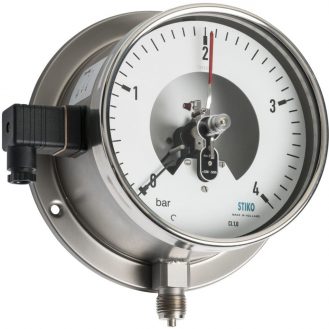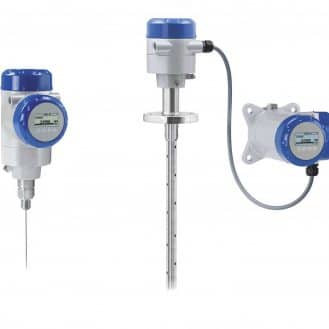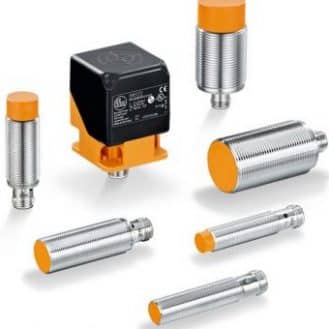Which Of The Following Sensors Uses Change In Resistance To Measure Position?
Choosing the right position sensor
Position sensors are devices used for determining the linear or athwart position of an object and converting it into a signal transmitted to the control unit via a fieldbus.
After temperature, position is the 2d nigh common physical quantity measured in manufacture. Position sensors are used for a wide variety of industrial and commercial applications.
View position sensors
-
How to choose a position sensor?

MTS Sensor Technologie GmbH & Co position sensor KG When choosing a position sensor, also known as a displacement sensor, you must determine whether you need a linear or rotary sensor, what the measuring range should be, what resolution yous crave and what the level of repeatability should exist.
You will likewise demand to define what its shape should be according to the type of associates that is going to be used. It is too of import to decide how you will use the output signal and whether your awarding requires the use of a specific sensor: a sensor with a protection rating for wet or dusty environments, with ATEX standard for explosive environments, etc.
Selection criteria:
- linear or rotary
- geometry / assembly
- measuring range
- output indicate
- IP protection rating, ATEX standard
-
What types of position sensors are at that place?
In that location are five types of position sensor engineering science, each with its ain advantages and disadvantages:
Type of sensor Non-contact Advantages Disadvantages Notes Potentiometric - High accuracy
- Inexpensive
- Loftier wearable and tear
- Sensitive to dust
- Sensitive to extreme temperatures
- Linear or athwart sensor
LVDT or RVDT - Loftier accuracy
- Heavy duty
- Low sensitivity to harsh environments
- Quite expensive
- Bulky and heavy
- RVDT: rotation limited to xl° more than or less
Optical - Loftier accuracy
- High resolution
- Fragile
- Sensitive to dust
- Sensitive to extreme temperatures
- More expensive than a magnetic sensor
Magnetic
Hall consequenceTen - Heavy duty
- Low sensitivity to liquid
- Sensitive to impact
- Disrupted by magnetic materials and electrical wires
- Hysteresis
Magnetostrictive X - Heavy duty
- Accurate for long lengths
- Sensitive to temperature changes
- Lack of accurateness for short lengths
- Quite expensive
-
Why choose an potentiometric position sensor?

Siko potentiometric rotary sensor Potentiometric position sensors, also called a resistive sensors, mensurate the resistance of a conductor track betwixt a reference betoken and a cursor continued to a moving function (or its support). The resistance measured by the sensor is used to calculate the position of the part.
These sensors are accurate and more often than not inexpensive because their technology is unproblematic. Withal, they are often sensitive to wear, vibration, strange bodies and extreme temperatures.
Advantages:
- simple technology
- precise measurement
- inexpensive
-
Why choose an LVDT or RVDT position sensor?

TRANS-TEK LVDT position sensor LVDT (Linear Variable Differential Transformer) position sensors and RVDT (Rotary Variable Differential Transformer) position sensors are made up of ii transformers that share the same magnetic cadre continued to the part (or the part's support) whose position you need to determine. When the magnetic core moves, the electrical voltage varies between the two transformers, allowing the position of the part to exist calculated.
These sensors are very accurate. They are reliable, heavy-duty and tin withstand farthermost environments, especially considering you can move the signal processing organisation abroad from the sensor. They are often expensive, however, as well as cumbersome and heavy.
Advantages:
- High accuracy
- reliable
- heavy duty
- withstands extreme environments
-
Why cull an optical position sensor (encoder)?

Micro-Epsilon optical position sensor Optical position sensors are used to decide the position and angular or linear displacement of a part.
- Incremental sensors: they work in relation to a reference position. After a ability failure, the data processing organisation must look for the encoder to transport the information corresponding to the reference position in order to correctly exploit the athwart displacement information.
- Absolute sensors: they piece of work as presently as the power is turned on. Absolute sensors besides permit you to count the number of revolutions completed.
Optical rotary position sensors incorporate light-emitting diodes (LEDs) that make information technology possible to "read" the motility of an opaque disc streaked with translucent windows. Linear position sensors can exist rotary cable sensors (in this case the cable mounted on a reel is connected to the office whose position is to be adamant) or can consist of a graduated scale and a read head to read the position.
These sensors generally offer a high resolution. The resolution corresponds to the number of signals sent for one axis turn. They are very accurate. The accurateness corresponds to the tolerance for each signal sent. They have a fast response time.
You lot can choose an optical position sensor when you lot want to make sure that the measurements will not be disturbed past a magnetic field. Optical position sensors also do not have any hysteresis. They are delicate, however, and sensitive to impact, vibration, the presence of foreign bodies (dust, oil, etc.) and farthermost temperatures.
Optical position sensors are namely used when a high level of accurateness is required, for example for the manufacture of electrical parts or parts for medical analysis.
Advantages:
- high resolution
- loftier accurateness and availability
- non-contact measurement
-
Why choose a magnetic position sensor?

Curtiss-Wright magnetic position sensor Magnetic position sensors, also known as Hall outcome sensors, are used to determine a position by measuring the magnetic field of a magnet or magnetic record. You can apply this type of sensor to measure, for example, the position of a piston in a cylinder.
These sensors are heavy duty and non very sensitive to the presence of liquid or dust. However, they are sensitive to touch and can exist affected by magnetic interference, peculiarly that acquired by the proximity of electrical wires. The accurateness of these sensors tin be afflicted past hysteresis depending on the direction of travel.
Advantages:
- heavy duty
- not sensitive to most liquids
-
Why choose a magnetostrictive position sensor?

Eltra magnetostrictive position sensor Magnetostrictive sensors incorporate a waveguide into which an electrical pulse is sent that generates a magnetic field. When this magnetic field meets that of an external magnet, a mechanical elastic wave propagates by reflection to a read head integrated into the sensor. This allows the position of the external magnetic field to be determined based on the response time of the mechanical elastic wave.
These sensors are heavy duty and their accuracy increases with the length of the waveguide. They are therefore more accurate for measuring positions of a few meters. Magnetostrictive sensors are not very sensitive to vibrations, impact or temperatures up to 100°C. However, their accuracy can be influenced by temperature changes and they are relatively expensive.
Advantages:
- heavy duty
- the accuracy increases with the length of the sensor
Related guides
-
Choosing the Correct Pressure Gauge

Learn more
-
Choosing the right level switch

Learn more than
-
Choosing the right level sensor

Learn more
-
Choosing the right catamenia meter

Acquire more than
-
Choosing the right proximity sensor

Learn more
Source: https://guide.directindustry.com/choosing-the-right-position-sensor/
Posted by: simonsmurge2001.blogspot.com

0 Response to "Which Of The Following Sensors Uses Change In Resistance To Measure Position?"
Post a Comment